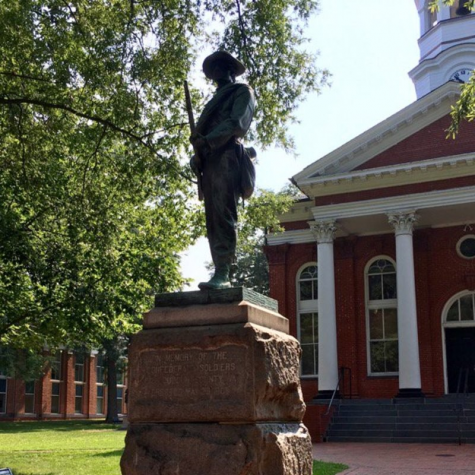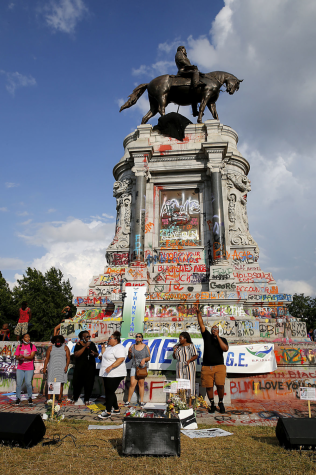America’s Bygone Momentos
The controversial meaning of a Confederate Monument
January 15, 2021

The early 20th century was a dark period for the South. Emboldened by the landmark case of Plessy v. Ferguson, several southern states enacted the Jim Crow Laws, which paved the way for racial segregation.
This new era of “Southern Pride” prompted several localities to build statues and monuments of Confederate soldiers, nearly half a century after the Civil War. The movement found its way to Loudoun County.
In 1908, The Board of Supervisors approved of and even assisted with the construction of a statue of a musket-wielding Confederate soldier, the “Silent Sentinel”, outside of the local courthouse. According to the Daughters of the Confederacy, a neo-Confederate group based in Richmond, the intent was to honor the relatives of those who fought in the war. In actuality, these statues were likely created to further white supremacy within the South.
Last July, this rare holdout of a Confederate monument was removed by those who commissioned it over a century ago. After years of public interest in the matter, a summer plagued by social unrest and the COVID-19 pandemic sealed the fate of the “Silent Sentinel”.
After the current Board of Supervisors held a unanimous vote to remove the statue (include when the vote occured), the Daughters of the Confederacy did the deed themselves. As of January, the statue has been transferred elsewhere.
Given the survivorship of our “Silent Sentinel” and other Confederate statues, this issue has not been resolved without a fight. Several groups have filed lawsuits against any effort to remove statues on public lands, despite their unpopularity.

Despite these efforts, public support for removing Confederate statues has gained prevalence across America, and momentum is building due to the ongoing protests occurring within our borders. These protesters have called for justice against what they view as systemic racism against African Americans. This draws a direct parallel with the ongoing issue of what to do with Confederate monuments long enshrined within the South.
One could argue that, in the fight against injustice, the Loudoun County Circuit Court having a Confederate statue is yet another example of systemic racism. In what scenario can a court offer impartial justice, especially pertaining to civil rights, when a soldier of the Confederacy guards the door? If the century-old memento no longer reflects the view of the courthouse that allowed it, then why did it remain for this long?
Even today, issues concerning our flagrant past continue to haunt our minds. This has encouraged us to consider the merit of removing long standing structures that, according to popular opinion, do not represent us as a country. The Jim Crow era is long gone, and this former locality of twenty thousand has grown into one of the wealthiest and most diverse counties in the country.
However, this gradual evolution is accompanied by the mandate that we create and maintain a community for all. Symbols of hate and intolerance should not be allowed on the doorstep of a courthouse or anywhere in the country. By interpreting the law in a fair manner, courthouses form the backbone of racial equality within our country. Without an impartial court, however, no county can function in lockstep with our progressing society.







